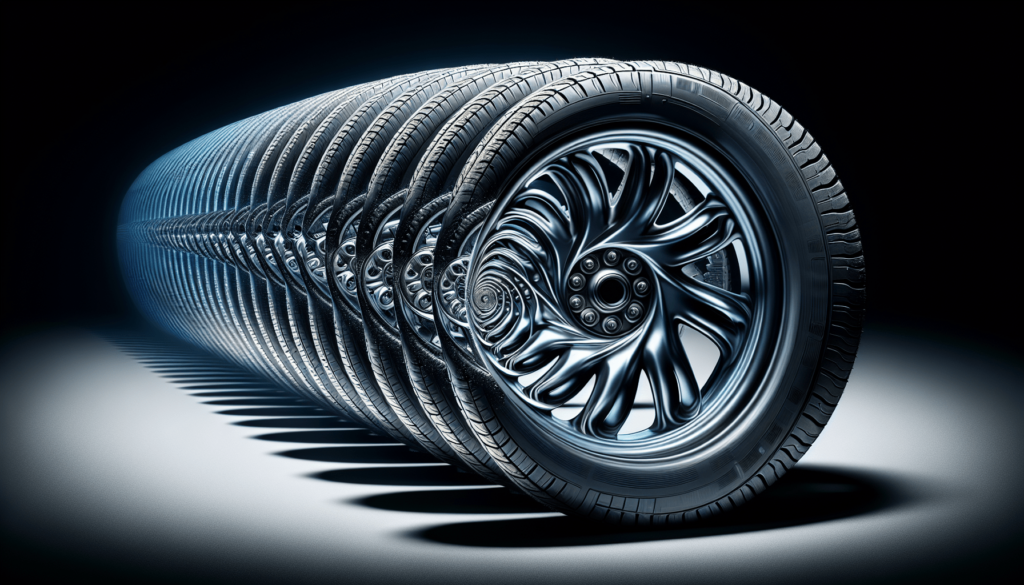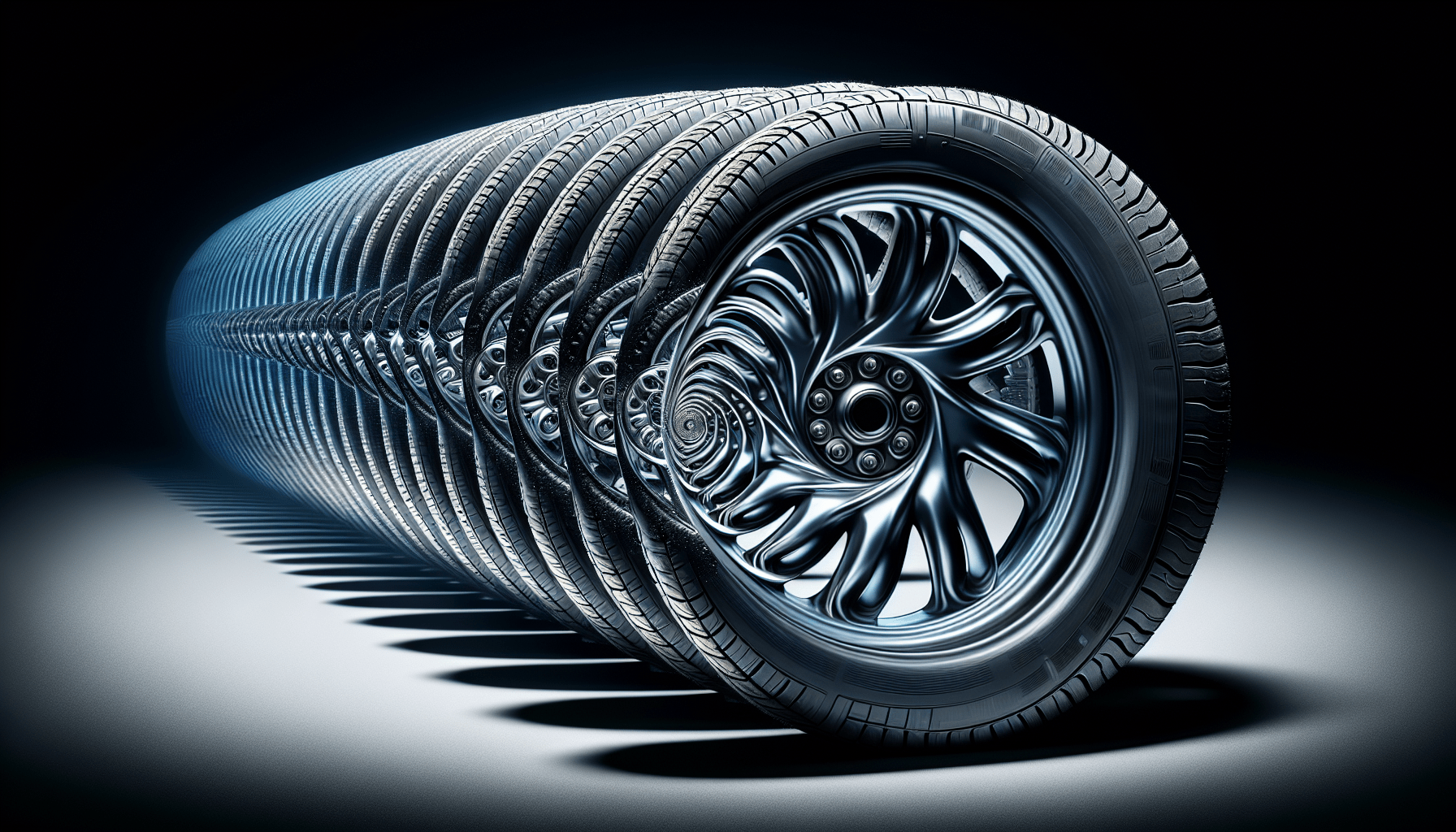Have you ever wondered if the alignment of your wheels could impact the longevity of your wheel components? It turns out, wheel alignment plays a crucial role in determining the lifespan of key components such as tires, suspension, and steering parts. Maintaining proper wheel alignment ensures that your wheels are operating at the correct angle and parallel to each other, distributing the vehicle’s weight evenly across the surface of the tires. In this article, we will explore the various ways wheel alignment can impact the lifespan of your wheel components and why it is important to regularly check and adjust your alignment. So, let’s dive in and uncover the fascinating relationship between wheel alignment and the longevity of your wheel components!
What is wheel alignment?
Definition and purpose of wheel alignment
Wheel alignment refers to the adjustment of the angles of the wheels on a vehicle so that they are parallel to each other and perpendicular to the ground. The purpose of wheel alignment is to ensure that the vehicle’s tires make proper contact with the road surface, maximizing tire performance and vehicle handling.
Components involved in wheel alignment
Wheel alignment involves the adjustment of three main components:
-
Caster: The caster angle determines the stability and steering effort of the vehicle. It is the tilt of the steering axis when viewed from the side of the vehicle.
-
Camber: The camber angle determines how the tire sits vertically in relation to the road. It is the inward or outward tilt of the top of the wheel when viewed from the front of the vehicle.
-
Toe: The toe angle determines the direction in which the tires are pointed. It is the angle formed by the tires when viewed from above the vehicle.
Signs of misaligned wheels
Uneven or rapid tire wear
One of the most common signs of misaligned wheels is uneven or rapid tire wear. When the wheels are not properly aligned, the tires can wear unevenly, causing one side of the tire to wear down faster than the other. This can lead to shorter tire lifespan and the need for more frequent tire replacements.
Vehicle pulling to one side
If your vehicle pulls to one side while driving, it may indicate that your wheels are misaligned. When the wheels are not aligned properly, it can cause the vehicle to pull to the side, requiring constant steering adjustment to drive straight. This can be not only inconvenient but also potentially dangerous, as it can affect the vehicle’s stability and handling.
Steering wheel vibration
Misaligned wheels can also result in steering wheel vibration. When the wheels are not aligned, the tires may not rotate smoothly, causing the steering wheel to vibrate while driving. This can lead to discomfort for the driver and may be a sign of a larger alignment issue that needs to be addressed.
Off-center steering wheel
Another sign of misaligned wheels is an off-center steering wheel. When the wheels are properly aligned, the steering wheel should be centered while driving straight. If the steering wheel is off-center, it may indicate that the wheels are not aligned correctly. This can affect the vehicle’s handling and may require alignment adjustments to fix.
Uneven brake wear
Misaligned wheels can also impact the braking system of the vehicle. When the wheels are not aligned, it can cause uneven brake wear, with certain brake pads and rotors wearing down faster than others. This can result in reduced braking performance and the need for more frequent brake replacements.

How does wheel alignment impact wheel components?
Tire lifespan
Proper wheel alignment plays a crucial role in maximizing the lifespan of your tires. When the wheels are aligned correctly, the tires wear evenly, ensuring optimal traction and longevity. However, misaligned wheels can cause uneven tire wear, leading to premature tire replacement. By maintaining proper wheel alignment, you can extend the lifespan of your tires and avoid unnecessary expenses.
Suspension system components
Wheel alignment also affects various components of the suspension system. The suspension system is responsible for supporting the weight of the vehicle, providing a comfortable ride, and maintaining tire contact with the road. When the wheels are misaligned, it can cause increased stress on suspension system components such as struts, shocks, control arms, and bushings. This can lead to accelerated wear and potential damage, resulting in costly repairs or replacements.
Wheel bearings
Wheel alignment directly impacts the wheel bearings of a vehicle. Wheel bearings support the weight of the vehicle and allow the wheels to rotate smoothly. When the wheels are misaligned, it increases the load on the wheel bearings, leading to increased wear and potential premature failure. Regular wheel alignment helps to distribute weight evenly and reduce stress on the wheel bearings, prolonging their lifespan.
Steering system components
The steering system of a vehicle is responsible for controlling the direction of the wheels. Misaligned wheels can put added stress on steering system components such as rack and pinion components, tie rods, and ball joints. This stress can lead to premature wear and potential damage to these parts. Proper wheel alignment helps to ensure that the steering system operates smoothly and reduces the risk of costly repairs.
Braking system components
Wheel alignment also affects the braking system components of a vehicle. Misaligned wheels can cause uneven brake wear, with some brake pads and rotors wearing down faster than others. This can result in decreased braking performance and potentially unsafe driving conditions. Proper wheel alignment helps to ensure even brake wear, maximizing the lifespan of brake components such as brake pads, rotors, and calipers.
Effects on tire lifespan
Uneven tire wear
Misaligned wheels can cause uneven tire wear, with certain parts of the tire wearing down faster than others. This can lead to a shorter tire lifespan and the need for more frequent tire replacements. Additionally, uneven tire wear can compromise vehicle safety and performance, as it reduces traction and stability on the road. By maintaining proper wheel alignment, you can ensure even tire wear and extend the lifespan of your tires.
Tire deformation and less traction
When the wheels are misaligned, it can cause tire deformation, particularly in the areas experiencing excessive wear. Tire deformation can result in reduced traction, as the tires no longer make proper contact with the road surface. Reduced traction can negatively impact vehicle handling, especially in wet or slippery conditions. Proper wheel alignment helps to maintain optimal tire shape and maximize traction, ensuring safe and efficient driving.
Increased risk of blowouts
Misaligned wheels can increase the risk of tire blowouts. When the wheels are not aligned properly, certain areas of the tire may experience excessive wear and stress. This weakens the tire structure, making it more susceptible to failure and blowouts, especially at high speeds. Regular wheel alignment helps to prevent uneven tire wear and reduces the risk of unexpected blowouts, promoting safer driving conditions.

Impact on suspension system components
Struts and shocks
Misaligned wheels can place additional stress on the struts and shocks of the suspension system. Struts and shocks are responsible for absorbing shocks and vibrations from the road, providing a smooth and comfortable ride. When the wheels are not aligned, it can cause irregular tire contact with the road surface, increasing the workload on these components. This can result in accelerated wear and potential damage to the struts and shocks, compromising the vehicle’s suspension system.
Control arms
Control arms are crucial suspension system components that connect the wheels to the vehicle’s frame. Misaligned wheels can cause the control arms to work at an awkward angle, leading to increased stress and wear. Over time, this can result in control arm failure, affecting the vehicle’s stability and handling. Proper wheel alignment helps to maintain the proper relationship between the control arms and the wheels, minimizing stress and extending their lifespan.
Bushings
Wheel alignment can also impact the bushings in the suspension system. Bushings provide cushioning and reduce friction between various suspension components. Misaligned wheels can cause increased stress on the bushings, leading to accelerated wear and potential damage. This can result in squeaking or rattling noises, reduced suspension performance, and the need for bushing replacements. Regular wheel alignment helps to reduce stress on the bushings, ensuring optimal suspension system operation.
Role of wheel alignment in wheel bearings
Increased load on bearings
Misaligned wheels can put increased load and stress on the wheel bearings. Wheel bearings support the weight of the vehicle and allow the wheels to rotate smoothly. When the wheels are not aligned, it can cause uneven weight distribution, leading to excessive load on certain bearings. This can accelerate wear and potentially cause premature bearing failure. By maintaining proper wheel alignment, the load on the wheel bearings is evenly distributed, improving their longevity and performance.
Uneven wear and premature failure
Misalignment can cause uneven wear on the wheel bearings. When the wheels are not aligned, it affects the rotation of the bearings, leading to uneven pressure distribution. Over time, this can result in accelerated wear and potential premature failure of the bearings. Regular wheel alignment helps to ensure smooth and even bearing rotation, minimizing wear and prolonging their lifespan.

Steering system implications
Rack and pinion components
Misaligned wheels can have adverse effects on the rack and pinion components of the steering system. When the wheels are not aligned correctly, it can cause increased stress on these components, accelerating wear and potentially causing damage. This can lead to steering issues, such as difficulty turning or an imprecise steering feel. Proper wheel alignment helps to reduce stress on the rack and pinion components, ensuring smooth and efficient steering operation.
Tie rods and ball joints
Wheel misalignment can also impact the tie rods and ball joints in the steering system. When the wheels are not aligned, it can place additional stress on these components, causing premature wear and potential failure. This can result in loose or imprecise steering and potentially unsafe driving conditions. Regular wheel alignment helps to maintain proper alignment of the tie rods and ball joints, reducing stress and promoting optimal steering performance.
Influence on braking system components
Brake pads and rotors
Misaligned wheels can affect the brake pads and rotors of the braking system. When the wheels are not aligned correctly, it can cause uneven brake wear, with certain brake pads and rotors experiencing excessive wear. This can result in reduced braking performance, longer stopping distances, and potential overheating of the brakes. Proper wheel alignment helps to ensure even brake wear, maximizing the lifespan of brake pads and rotors, and ensuring safe braking performance.
Calipers
Wheel misalignment can also impact the calipers of the braking system. Calipers are responsible for squeezing the brake pads against the rotors to create friction and slow down the vehicle. When the wheels are misaligned, it can cause uneven pressure distribution on the calipers, leading to accelerated wear and potential caliper malfunction. Regular wheel alignment helps to maintain proper caliper function and reduces the risk of caliper damage or failure.

Importance of regular wheel alignment
Proactive maintenance
Regular wheel alignment is an essential part of proactive vehicle maintenance. By scheduling regular wheel alignment checks and adjustments, you can prevent potential issues before they become major problems. Proper alignment reduces stress on various components, prolongs their lifespan, and promotes optimal vehicle performance and safety.
Safety considerations
Maintaining proper wheel alignment is crucial for safe driving. Misaligned wheels can compromise vehicle handling, traction, and braking performance, increasing the risk of accidents and unsafe driving conditions. By keeping the wheels aligned correctly, you can ensure your vehicle operates as intended, minimizing the risk of unexpected incidents on the road.
Cost savings
Proper wheel alignment can also save you money in the long run. By preventing premature wear and damage to various wheel components, you can avoid costly repairs or replacements. Additionally, proper alignment ensures even tire wear, maximizing the lifespan of your tires and reducing the frequency of tire replacements. By investing in regular wheel alignment, you can save on potential repair and maintenance costs.
How to identify and correct wheel misalignment
Professional wheel alignment
To identify and correct wheel misalignment, it is recommended to visit a professional auto service center. They have specialized tools and equipment to accurately measure and adjust the alignment angles of the wheels. Professional technicians can conduct a comprehensive alignment check, identify any misalignment issues, and make the necessary adjustments to bring the wheels back into proper alignment.
DIY wheel alignment checks
While a professional alignment is recommended for accurate results, there are some basic checks you can perform yourself to identify potential misalignment. These include visually inspecting the tires for uneven wear, checking if the vehicle pulls to one side, and observing the steering wheel position when driving straight. If you notice any signs of misalignment, it is best to have your vehicle professionally aligned to ensure accurate adjustments.
Wheel alignment adjustments
If a professional alignment reveals wheel misalignment, the technician will make the necessary adjustments to bring the wheels back into proper alignment. This involves adjusting the caster, camber, and toe angles according to the manufacturer’s specifications. Specialized alignment equipment is used to measure and adjust these angles accurately, ensuring optimal alignment and performance. Regular alignment checks and adjustments are recommended to maintain proper wheel alignment and prolong the lifespan of wheel components.
In conclusion, wheel alignment plays a crucial role in maximizing the lifespan of wheel components. Misaligned wheels can lead to uneven tire wear, increased stress on suspension and steering components, premature bearing failure, and compromised braking performance. Proper wheel alignment helps to ensure even tire wear, minimizes stress on components, promotes safe driving conditions, and saves cost in the long run. Regular alignment checks and adjustments are essential for proactive maintenance and to ensure optimal performance and safety of your vehicle.


